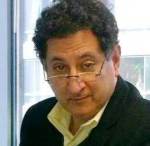Updated
Update Morocco: Latest Employment Numbers and Prospects – Jean R. AbiNader
Jean R. AbiNader
March 6, 2019

Jean R. AbiNader, Moroccan American Center
This past week, the High Commission for Planning (HCP) released its latest review on the Moroccan labor market. A summary provided by Morocco World News noted that the working age population, regardless of gender, numbered 25,950,000 in 2018, but those who were actively seeking employment or were employed was 11,979,000. An additional 13,970,000 were neither employed nor seeking employment, equaling some 54% of the working age population, not surprisingly, most are women, especially those residing in rural areas.
Men make up 71% of the 46% seeking employment or employed while only 22% are women, with the overall active rate reaching 42% in cities and 54% in rural areas. Differences in levels of education do not account for much variance. Among those without degrees, 46% are active, with high school degree holders at 43%, and university graduates in the active category with 56% employed or looking for employment.
Young people, those under 35, represent 38% of those employed according to the HCP. “The highest rates of employment compared to the overall working age population in the country by region are 64% in Dakhla-Oued Ed-Dahab, 45% in Marrakech-Safi, and just under 45% in Casablanca-Settat.” The lowest employment rates are in the regions of Guelmim-Oued Noun (34%), Laayoune-Sakia El Hamra (36%), and the Oriental (37%).
Despite all of the efforts of the past 20 years to diversify the economy and generate higher value jobs, HCP data shows that 42% of employed Moroccans still work in the service sector, 35% as agricultural labor, 12% in the industry and crafts sectors, and 11% in construction.
Among the foreign workforce of 45,000 registered workers in Morocco, 23% are from Arab countries, 37% from Europe, and 33% from sub-Saharan Africa, with 60% male, and 84% holding degrees. Although 51% of foreigners are employed or seeking employment compared to 46% of Moroccans, “the employment rate between foreigners and nationals is much closer: 44% among foreigners and 42% among nationals.
On the jobs latest briefings, unemployment in the country dropped from 10.2% to 9.8% between 2017 and 2018, adding 112,000 jobs in urban areas and 21,000 in rural areas.
Among other issues, the data underscores a major problem facing Morocco, as well as the other Maghreb countries, which is brain drain caused by at least three factors: lack of job opportunities commensurate with one’s educational level, uncompetitive compensation when compared to the EU and the Gulf, and need for more effective efforts to guide university students to skill areas that qualify them for existing attractive jobs in manufacturing and services.
For example, public sector doctors in Casablanca issued a statement over the “catastrophic conditions in the health sector” saying they would emigrate collectively to find better opportunities. This is a similar condition in higher education as well. In fact, Education Minister Amzazi lamented the fact that 600 engineers leave the country every year in search of better conditions and, ultimately, job satisfaction and better pay in a more academically-progressive environment.
According to a 2018 ReKrute study, reported in Morocco World News, 91% of Moroccan professionals aged 35 and below are interested in working abroad. Level of education, according to the HCP, also impacts employment. In 2018, the unemployment rate among holders of a vocational training diploma was 23.3%, higher than that of general education graduates (15.4%) and that of all graduates aged 15 and over (17.1%). On the other hand, unemployment for university graduates was 17.1% compared to 3.5% among non-university job seekers. These HCP figures did not indicate the quality or types of employment in either case.
Two final notes: when asked about the importance of “wasta” or personal connections in landing a job, 79% of Moroccan respondents said that it was essential, placing fifth behind Lebanon (90%), Jordan (85%), Bahrain (79%), and Kuwait (79%), according to the World Bank, which also noted that Moroccan university graduates showed the highest level of tolerance in the region among university graduates.